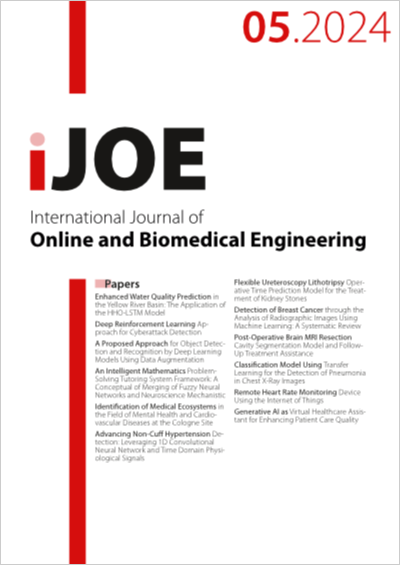Post-Operative Brain MRI Resection Cavity Segmentation Model and Follow-Up Treatment Assistance
DOI:
https://doi.org/10.3991/ijoe.v20i05.45609Keywords:
Attention-Enabled U-Net, Post-operative MRI, Resection Cavities, Segmentation, VGG16 Encoder.Abstract
Post-operative brain magnetic resonance imaging (MRI) segmentation is inherently challenging due to the diverse patterns in brain tissue, which makes it difficult to accurately identify resected areas. Therefore, there is a crucial need for a precise segmentation model. Due to the scarcity of post-operative brain MRI scans, it is not feasible to use complex models that require a large amount of training data. This paper introduces an innovative approach for accurately segmenting and quantifying post-operative brain resection cavities in MRI scans. The proposed model, named Attention-Enhanced VGG-U-Net, integrates VGG16 initial weights in the encoder section and incorporates a self-attention module in the decoder, offering improved accuracy for postoperative brain MRI segmentation. The attention mechanism enhances its accuracy by concentrating on a specific area of interest. The VGG16 model is comparatively lightweight, has pre-trained weights, and allows the model to extract incredibly detailed information from the input. The model is trained on publicly available post-operative brain MRI data and achieved a Dice coefficient value of 0.893. The model is then assessed using a clinical dataset of postoperative brain MRIs. The model facilitates the quantification of the resected regions and enables comparisons with each brain region based on pre-operative images. The capabilities of the model assist radiologists in evaluating surgical success and directing follow-up procedures.
Downloads
Published
How to Cite
Issue
Section
License
Copyright (c) 2024 SOBHA XAVIER P, Christ (Deemed to be University), RAJU G

This work is licensed under a Creative Commons Attribution 4.0 International License.


